About this entry
You're currently reading "Game Plan" an entry on Kate Turkington
- Published:
- 04.09.15 / 11am
- Category:
Game Plan
I've just spent a week in Kruger National Park and it was as amazing, exhilarating and awesome as ever.
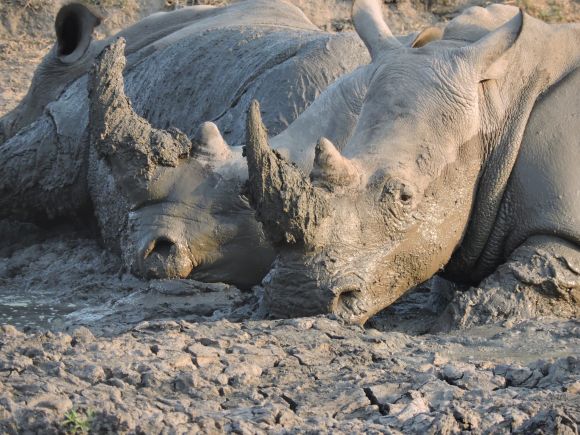
White rhinos wallowing
Foreign and local visitors alike pay millions of rand to come and experience Kruger. Here are five top tips to make your visit even more enjoyable.

Mother and baby spotted hyena
1. Bookings.
The best accommodation (riverside bungalows, family houses, cottages, safari tents) is almost impossible to find during the school holidays unless you’ve booked well in advance. In future, remember to book 11 months in advance to get your exact accommodation of choice: i.e.. June 1st for July 2016; September 1st for August, 2016. Be on the phone from 7.30am. You can book on line but I’ve always found phone bookings quicker and easier. (Caveat: have a flask of coffee at hand because it can take up to 20 or 30 minutes to be put through.) But it’s always worth surfing www.sanparks.org (extremely user-friendly) for cancellations. If you’re not children-bound, then accommodation is usually no problem. There are special rates for pensioners in off-peak times, so flaunt those wrinkles and make hay.

Impala lilies in full bloom in August
2. Where to Stay
Main camps.
Best for kids is one of the 12 main rest camps (e.g. Berg-en-Dal, Skukuza, Lower Sabie, etc.) because there’s lots of safe space where they can run around freely after being cooped up in a vehicle. The camps also have excellent swimming pools, a shop (where kids love to go on their own and buy ice creams or souvenirs), and usually a big perimeter fence that they can patrol on their own and spot elephants, hippos, giraffes, or whatever is mooching along.
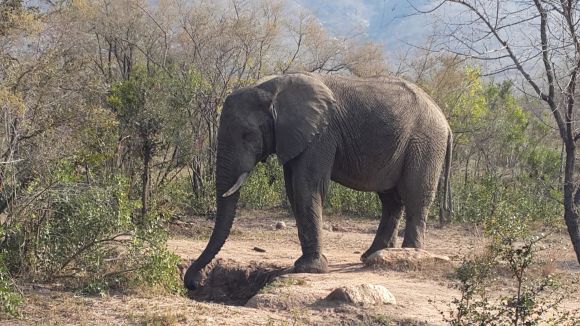
Old bull elephant slaking his thrist
Bushveld camps.
No kids? Then opt for one of the little bushveld camps and you’re guaranteed privacy and exclusivity (more expensive than the main camps but worth every penny). My favourite is Sirheni, in the far north. The cottages all face perennial water (you’ll often see the resident leopard having its sundowner there) and the bird life is fantastic.
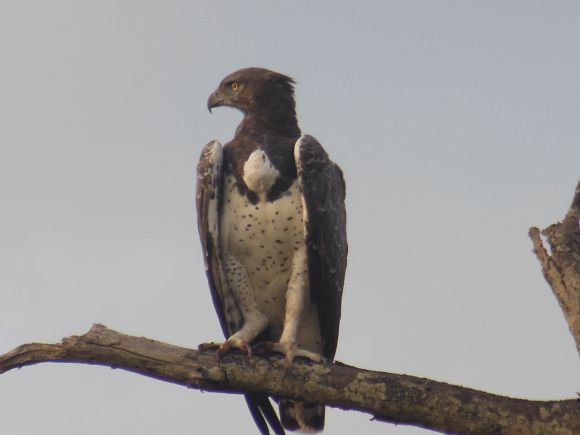
Martial eagle
One of Kruger's iconic birds - the lilac-breasted roller

The highly endangered Southern ground hornbill
Camping sites.
Do-it-yourselfer camping types (I was born too old to camp) rave about Kruger’s newest accommodation – Tsendze Rustic Camp Site just 7km from Mopani main rest camp. The campsite sits amongst lovely stands of ancient trees and its water courses are magnets for elephant bulls and large buffalo herds.
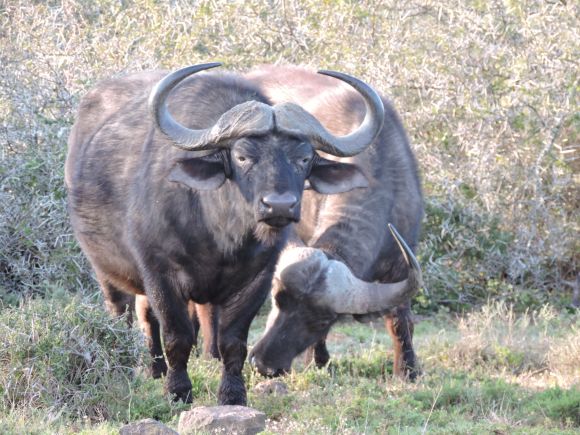
Cape buffalo
3. When to go
The park is lovely all year round, but winter is best for game spotting because the grass is low, and there’s a lack of surface water, so game has to seek out the dams and water holes. The bush looks a bit drab and dry, but has its own stark beauty.
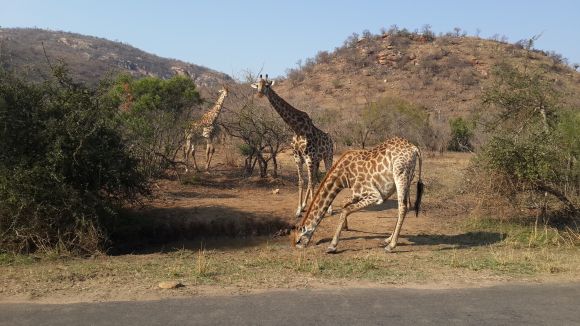
Giraffe are at their most vulnerable when drinking
November is bonanza time because all the migrant birds are back and there are baby animals everywhere. If you can stand the heat (although most accommodation now has aircon) go in February. There are fewer visitors about, and the park is at its most beautiful.
4. Guided drives.
These are great value for money. Choose the sunset drive because you get to see the game as it comes down to drink in the early evening, followed by the thrill of a spotlight drive where your guide will point out predators, nocturnal animals like porcupines, gents, bush babies and civets. In winter, take a blanket and a hip flask.
But general rules are to drive slowly, get off the beaten track and try the bush roads, and be patient at water holes.
5. Best places to spot game.
My mantra is ‘You Never Know What’s Round the Next Corner’. I’ve had spectacular leopard sightings at noon, been stuck for nearly an hour in the middle of a large breeding herd of elephants just as I was heading back to camp at closing time, saw two Pels fishing owls in as many minutes early one morning at Pafuri, and watched a crocodile take a baby zebra at a dam in mid-morning. However… Satara and the middle of the park have the sweetest grasses that attract the grazers with their predator followers. You’d be unlucky not to spot lion, leopard, cheetah and maybe wild dog around Lower Sabie (we saw all of these when we left the camp early one morning last year). But general rules are to drive slowly, get off the beaten track and try the bush roads, and be patient at water holes.
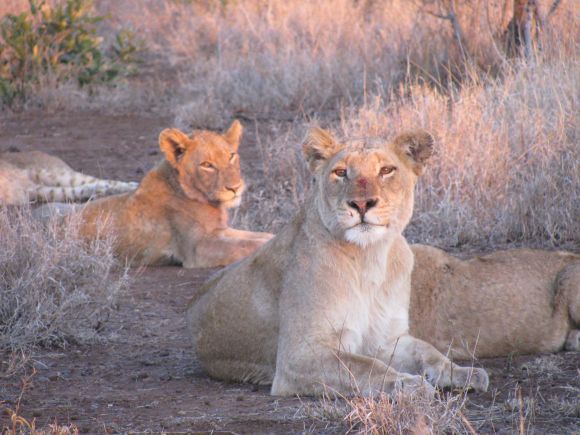
Lioness and cub
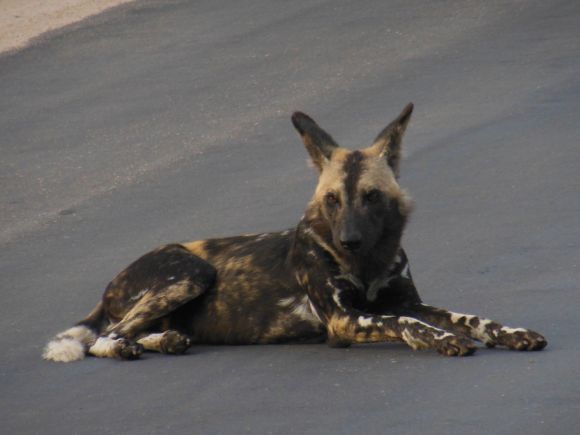
Wild dog- the elusive painted wolf
Just remember that Kruger’s almost 2 million hectares of wilderness (think the size of Israel or Wales) is home to hundreds of thousands of animals, 500 bird species, 116 reptile species and 34 amphibians. That’s a lot of critturs waiting to be spotted.
If you’re already a Kruger fan, you know what I mean. If you haven’t yet visited – get ready for one of the greatest experiences of your life.
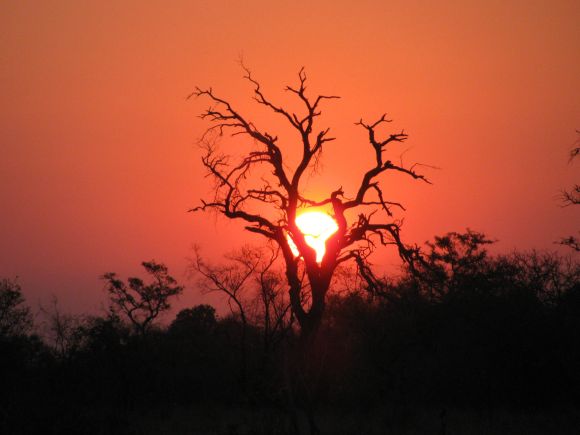
Sunset in Kruger